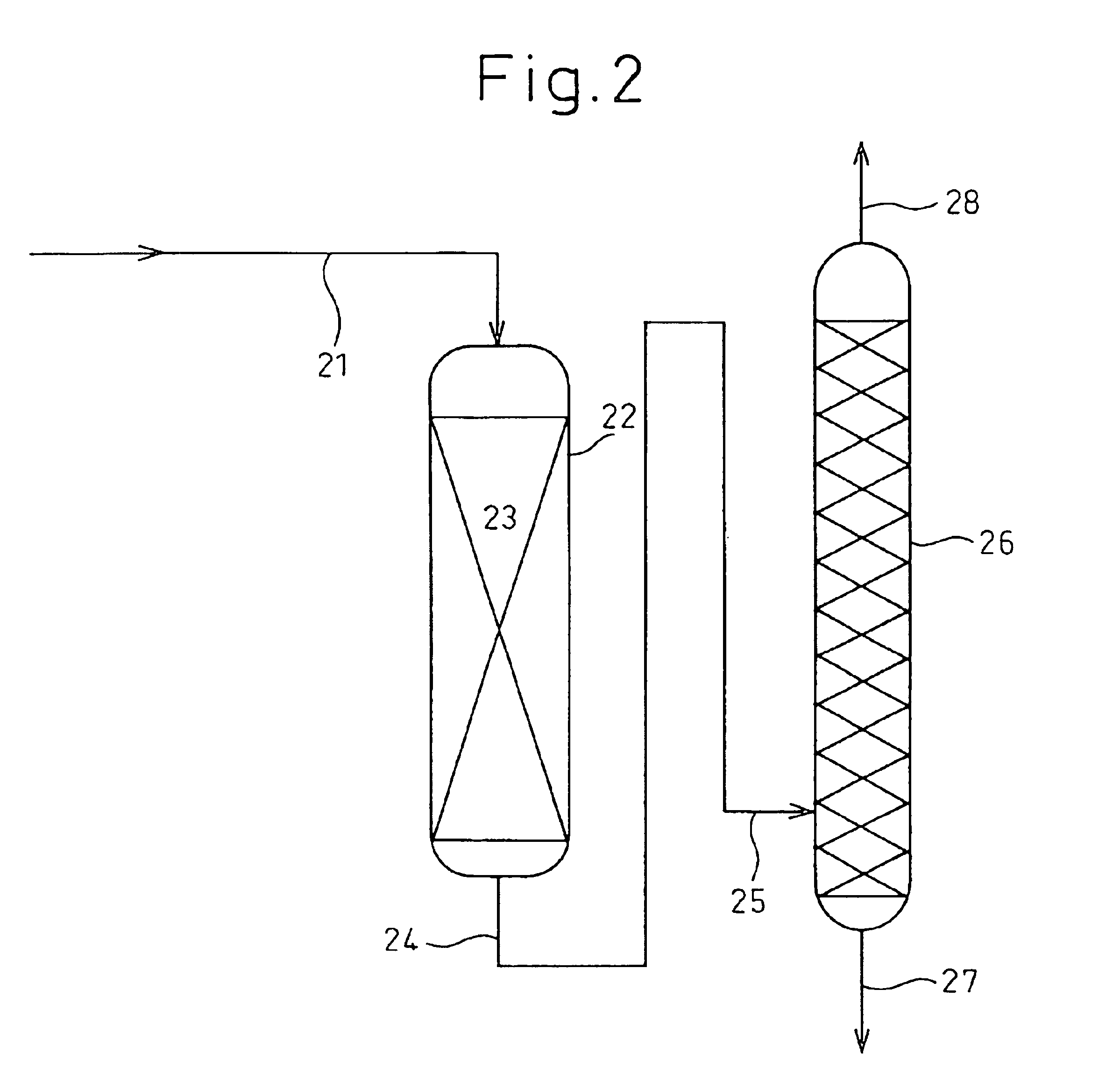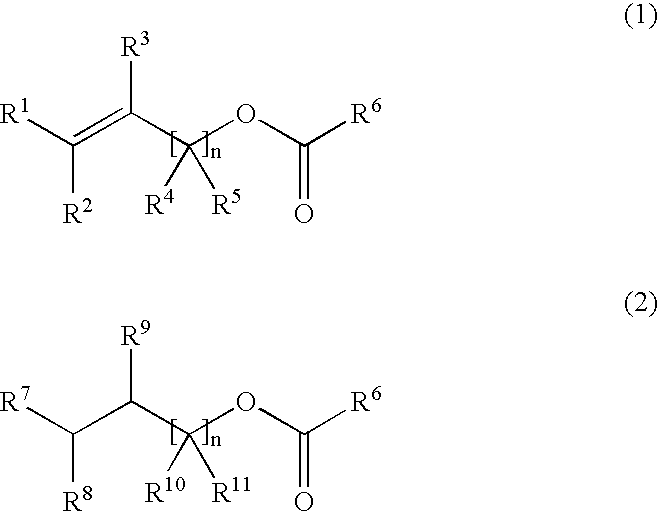Process for producing hydrogenated ester, hydrogenating catalyst used therefor and process for producing the catalyst
a hydrogenating catalyst and hydrogenated ester technology, applied in the direction of catalyst activation/preparation, physical/chemical process catalysts, metal/metal-oxide/metal-hydroxide catalysts, etc., can solve the problem of high energy consumption in separating water by distillation, the reaction apparatus and reaction process are more complicated and the reaction rate and conversion rate is difficult to achieve industrially advantageous effect of raw material conversion rate and conversion ra
- Summary
- Abstract
- Description
- Claims
- Application Information
AI Technical Summary
Benefits of technology
Problems solved by technology
Method used
Image
Examples
example 1a-1
(Dilution of Raw Material with Inert Solvent)
[0162]In accordance with the flow chart shown in FIG. 1, 130 ml of a carrier-type palladium catalyst (3 mm-diameter sphere, silica carrier, palladium content 0.5%, specific surface area 300 M2 / g, mfd. by NE-Chem Cat K.K.) as a hydrogenating catalyst was packed into a cylinder-type reactor 5 made of stainless steel having an inside diameter of 20 mmφ so as to form a catalyst-packed layer 6, and the pressure in the reactor 5 was adjusted to 2.0 MPa (gauge pressure) by use of hydrogen. From the upper part of the reactor 5, a liquid mixture comprising recycled n-propyl acetate (hydrogenated ester): allyl acetate (unsaturated group-containing ester)=12.9:1 (wt / wt) was charged thereinto at 40° C. from a feed pipe 1 for feeding the unsaturated group-containing ester and was circulated in the reactor 5 at a rate of 550 ml / hr, and hydrogen was also circulated from a hydrogen gas-feeding pipe 2 in the reactor 5 at a rate of 18.6 Nl / hr (fixed-bed ty...
example 1a-2
[0166]An unsaturated group-containing ester was hydrogenated in the same manner as in Example 1A-1 except that 130 ml of a carrier-type palladium catalyst (alumina carrier, pellet with diameter of 3 mm×length of 3 mm, palladium content 0.3%, specific surface area 100 m2 / g, mfd. by NE-Chem Cat K.K.) was used as the hydrogenating catalyst instead of 130 ml of the carrier-type palladium catalyst (silica carrier, 3 mm-diameter sphere, palladium content 0.5%, specific surface area 300 m2 / g, mfd. by NE-Chem Cat K.K.) used in Example 1A-1; and the pressure in the reactor was 0.9 MPa (gauge pressure) instead of 2.0 MPa (gauge pressure) used in Example 1A-1. The temperature of the reactor outlet (bottom portion of the catalyst layer) was 97.5° C.
[0167]The reaction mixture from the reactor outlet was condensed and was analyzed by using gas chromatography (GC-14B mfd. by Shimazu Kagaku K.K.; Hydrogen flame ionization detector) under the above-mentioned conditions. The thus obtained results are...
example 1a-3
[0168]An unsaturated group-containing ester was hydrogenated in the same manner as in Example 1A-1 except that 130 ml of a carrier-type ruthenium catalyst (alumina carrier, pellet with diameter of 3 mm×length of 3 mm, ruthenium content 0.5%, specific surface area 100 m2 / g, mfd. by NE-Chem Cat K.K.) was used as the hydrogenating catalyst instead of 130 ml of the carrier-type palladium catalyst (silica carrier, 3 mm-diameter sphere, palladium content 0.5%, specific surface area 300 m2 / g, mfd. by NE-Chem Cat K.K.) used in Example 1A-1; and a mixture liquid comprising methallyl acetate and isobutyl acetate was used instead of the mixture liquid comprising allyl acetate and n-propyl acetate, respectively, used as the raw material in Example 1A-1. The temperature of the reactor outlet (bottom portion of the catalyst layer) was 95.5° C.
[0169]The reaction mixture from the reactor outlet was condensed and was analyzed by using gas chromatography (GC-14B mfd. by Shimazu Kagaku K.K.; Hydrogen ...
PUM
| Property | Measurement | Unit |
|---|---|---|
| Temperature | aaaaa | aaaaa |
| Temperature | aaaaa | aaaaa |
| Angle | aaaaa | aaaaa |
Abstract
Description
Claims
Application Information
 Login to View More
Login to View More - R&D
- Intellectual Property
- Life Sciences
- Materials
- Tech Scout
- Unparalleled Data Quality
- Higher Quality Content
- 60% Fewer Hallucinations
Browse by: Latest US Patents, China's latest patents, Technical Efficacy Thesaurus, Application Domain, Technology Topic, Popular Technical Reports.
© 2025 PatSnap. All rights reserved.Legal|Privacy policy|Modern Slavery Act Transparency Statement|Sitemap|About US| Contact US: help@patsnap.com



